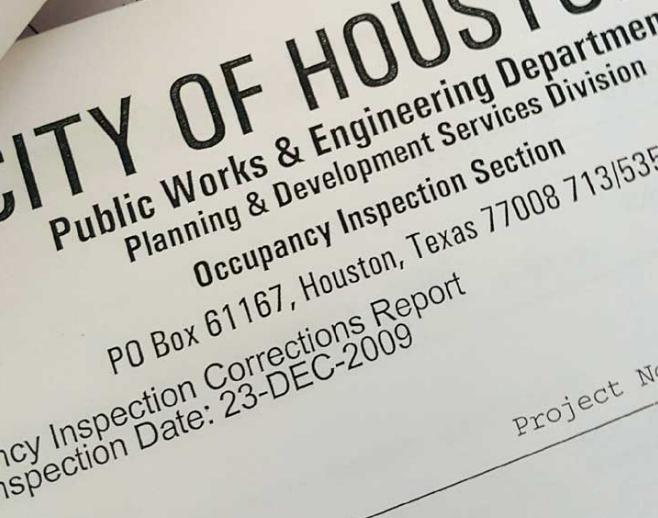Budgeting for Occupancy Report Repairs & Corrections

Applying for Occupancy Permit, or having the City send you notification that you're due for an Occupancy Inspection, usually ends up generating an inspection report. This report details any and every thing that the inspectors find that needs correction in order to comply with standard codes and practices, along with unsafe things they notice.
Report Layout and Interpretation
These reports are usually sectioned by trade, i.e., Mechanical, Electrical, Plumbing, Signage, Structural, etc. and are often confusing. For instance, the structural inspector will note that they would like more exit/ egress lighting installed, which you would think would be in the electrical section of the report, but often it is not.
In the report, you'll typically find references to code citations and very general "Fix anything that is broken..." type comments. These are generally there to make sure you double-check these items and ultimately to reassign the responsibility as the owner or lease-holder to fix anything related to those subjects. In general, these items are 'copy-pasted' and appear very generic and non-specific.
When you see anything prefixed with 'Additional Comments:' wording, those are specific comments that the inspector(s) have noted and often have slightly more specific wording, i.e., 'Fix the light that is hanging over the door and about to fall at the back of the warehouse'. You'll want to study any and all 'Additional Comments,' as these are the key areas of immediate focus when attempting to make repairs.
You'll often also see at the top of each section some wording such as 'A Master ______ technician will need to apply for a permit for this work'. When you see that noted in your report, it means exactly what it says... that work will need to be permitted specifically.
How to get the report addressed and repairs made properly
- Send us the report via email.
- We'll review the report and either begin the process of procuring permits and repairing, or we can pause and create a preliminary estimated budget.
- After the work has been completed, we'll attempt to call for appropriate inspections and get passing 'Green Tags' on all the work performed.
- Often, inspectors will return and find MORE items that they would like to see corrected, at which point, we mobilize again and make further repairs, repeating these steps until we've gained their satisfaction and approval.
- At the point wherein all repairs are complete and everything's been inspected, the authority having jurisdiction (City) will release your occupancy permit to you.
Budgeting for Occupancy Permit Repairs
When you request a quote for occupancy repairs, we're only able to firmly quote 'hard scope' items and those types of items are usually absent from occupancy inspection reports. Since the nature of occupancy reports is usually too vague, this makes firmly quoting occupancy repairs extremely difficult if not entirely impossible. Unfortunately, if you insist on a firm number, we often simply will not be able to provide one.
What we can do, however, is analyze the report, assign some basic values and allowances to certain aspects that have been referred to in the document based on our experience, analyze what we see for ourselves in your facility. and attempt to get a proper working budget to your for consideration. In these instances, we usually refer to these budgets as Not-To-Exceed amounts.
We'll mobilize on the work, complete what we anticipate the inspectors would like to see to the best of our knowledge, call for final inspection and hope that everything meets their satisfaction and no more budgeting is required.
Read more on quotes vs. budgets
